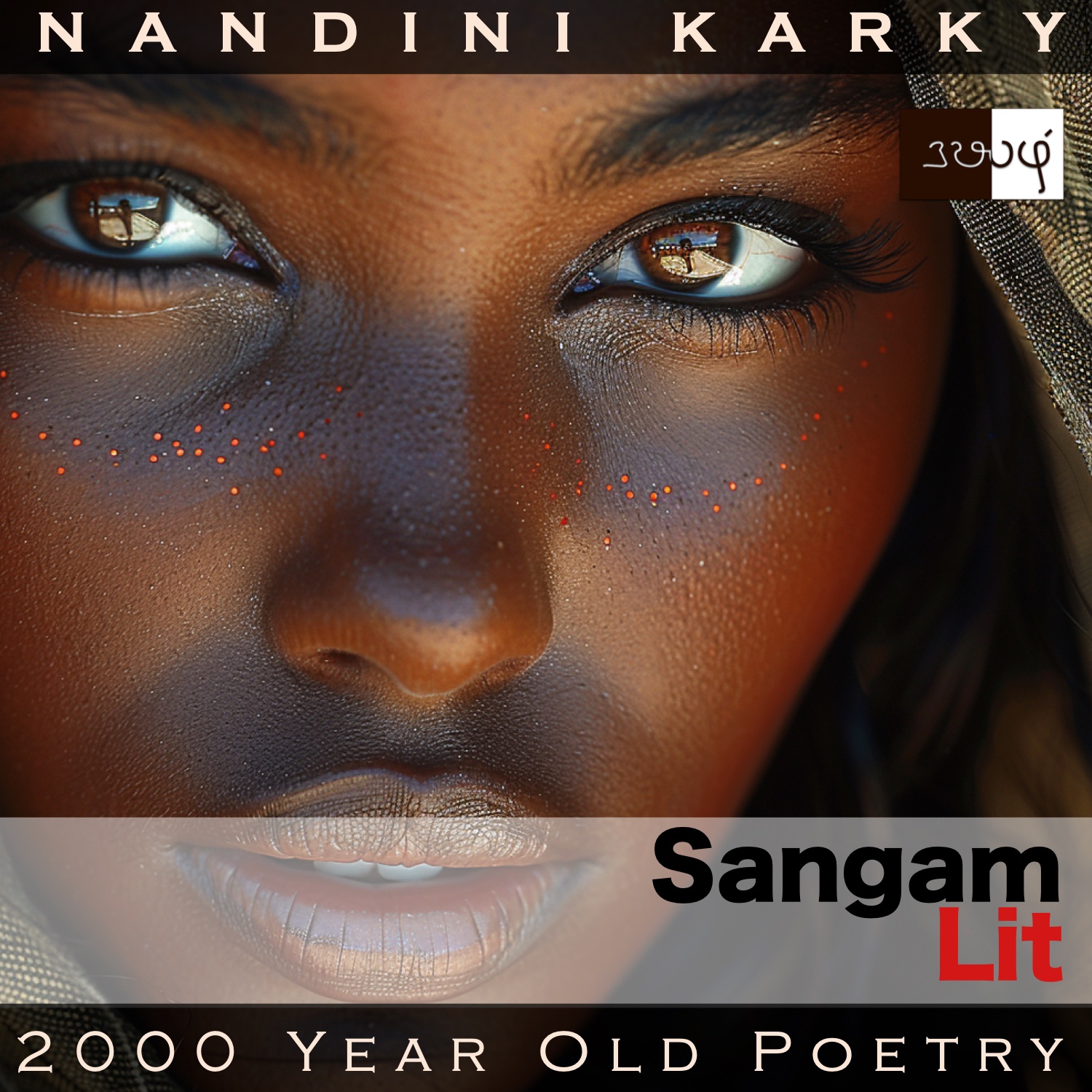Podcast: Play in new window | Download
Subscribe: Apple Podcasts | Spotify | Amazon Music | Android | iHeartRadio | Email | TuneIn | RSS | More
In this episode, we listen to anxious words about an imminent attack, as depicted in Sangam Literary work, Puranaanooru 350, penned by the poet Madurai Melaikkadai Kannampuguthaar Aayathanaar. The verse is situated in the category of ‘Kaanji Thinai’ or ‘Defence’ and extols the beauty of a maiden.

தூர்ந்த கிடங்கின், சோர்ந்த ஞாயில்,
சிதைந்த இஞ்சி, கதுவாய் மூதூர்
யாங்கு ஆவதுகொல் தானே, தாங்காது?
படு மழை உருமின் இரங்கு முரசின்
கடு மான் வேந்தர் காலை வந்து, எம்
நெடு நிலை வாயில் கொட்குவர் மாதோ;
பொருதாது அமைகுவர்அல்லர் போர் உழந்து,
அடு முரண் முன்பின் தன்னையர் ஏந்திய
வடிவேல் எஃகின் சிவந்த உண்கண்,
தொடி பிறழ் முன்கை, இளையோள்
அணி நல் ஆகத்து அரும்பிய சுணங்கே.
We journey on in this section of this ancient anthology talking about wars to win a woman. The poet’s words can be translated as follows:
“With those silt-filled moats, battered fort gates, shattered fort walls, this ancient town is ruined already. How can it bear this and what is to become of it now? With roaring drums, akin to thundering clouds, those kings on speedy horses will arrive in the morning, and pace around our tall main gates and will not rest without waging war. For such is the beauty of the reddened kohl-streaked eyes, akin to well-etched spears held by her courageous brothers, who are ever ready to fight and kill in the battlefield, the forearms decked with bangles, and the pallor spots spreading on the adorned bosom of that young maiden!”
Let’s delve into the details. The poet describes to us the state of the town as it was then, talking about how the once-deep moats are now filled with silt without proper maintenance, and so was the derelict state of the fort gates and walls of that ancient town, ruined by many wars. Now, he wonders how this town can bear anything more? The poet is worried because he is sure the kings are going to arrive one after the other to that town, with drums thundering like clouds. Also, he explains how they come not in peace but with a warlike attitude. Now leaving behind these kings who will come, the poet talks about the nature of the maiden’s brothers saying they have seen many a battle-field and have a ruthless nature to fight and kill. He then seamlessly transits from the brothers to the red-streaked spears they hold in hand and he compares these to the reddened kohl-streaked eyes of the maiden, further throwing a glimpse of her bangle-clad arms and the pallor spots sprouting on her beautiful breasts. He thus, concludes with the implied words that such is her beauty, that those kings will surely come, wage war and spread ruin in her town.
Reverting to the mention of pallor spots, it made me wonder if Sangam poets are referring to ‘striae’ or ‘stretch marks’ that appear in a girl’s body during puberty. That would explain the multiple references to the appearance of these spots, which are not seen as blemishes but as symbols of beauty. Also, I was struck by the unusual simile of equating red spears, with the eyes of a woman, and this made me think of how, in people of African descent, with a very dark skin, we sometimes find that their eyes are indeed red. Some sources say this could be a genetic adaptation for surviving in the extreme heat of zones in Africa such as the Kalahari. Could these red-eyed Sangam maiden with such beauty be a proof of the African lineage of these ancient Tamils?




Share your thoughts...